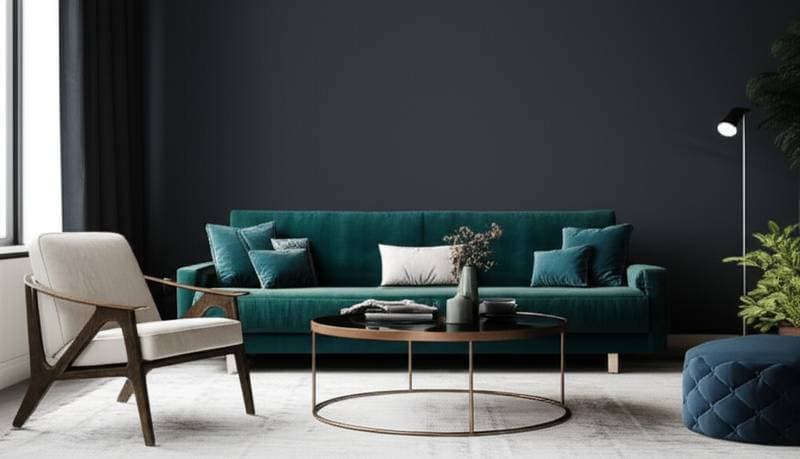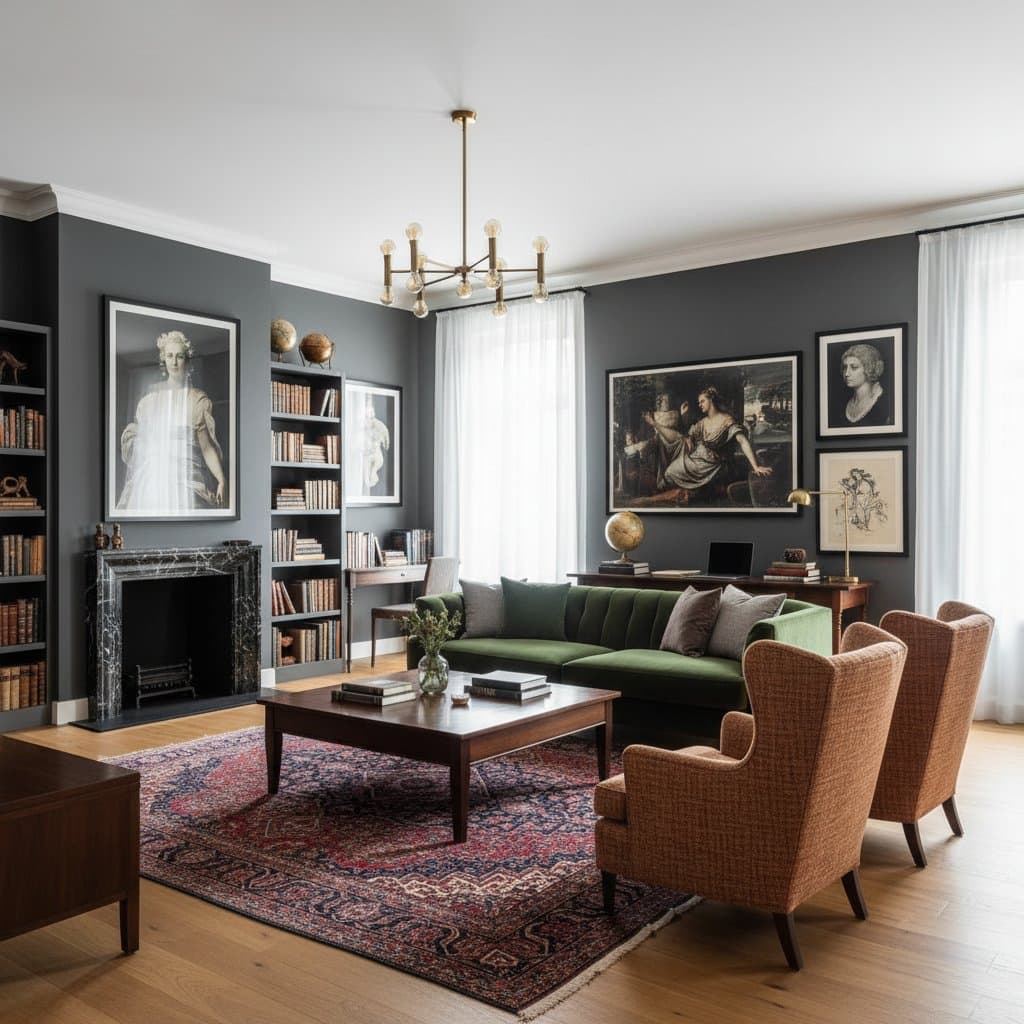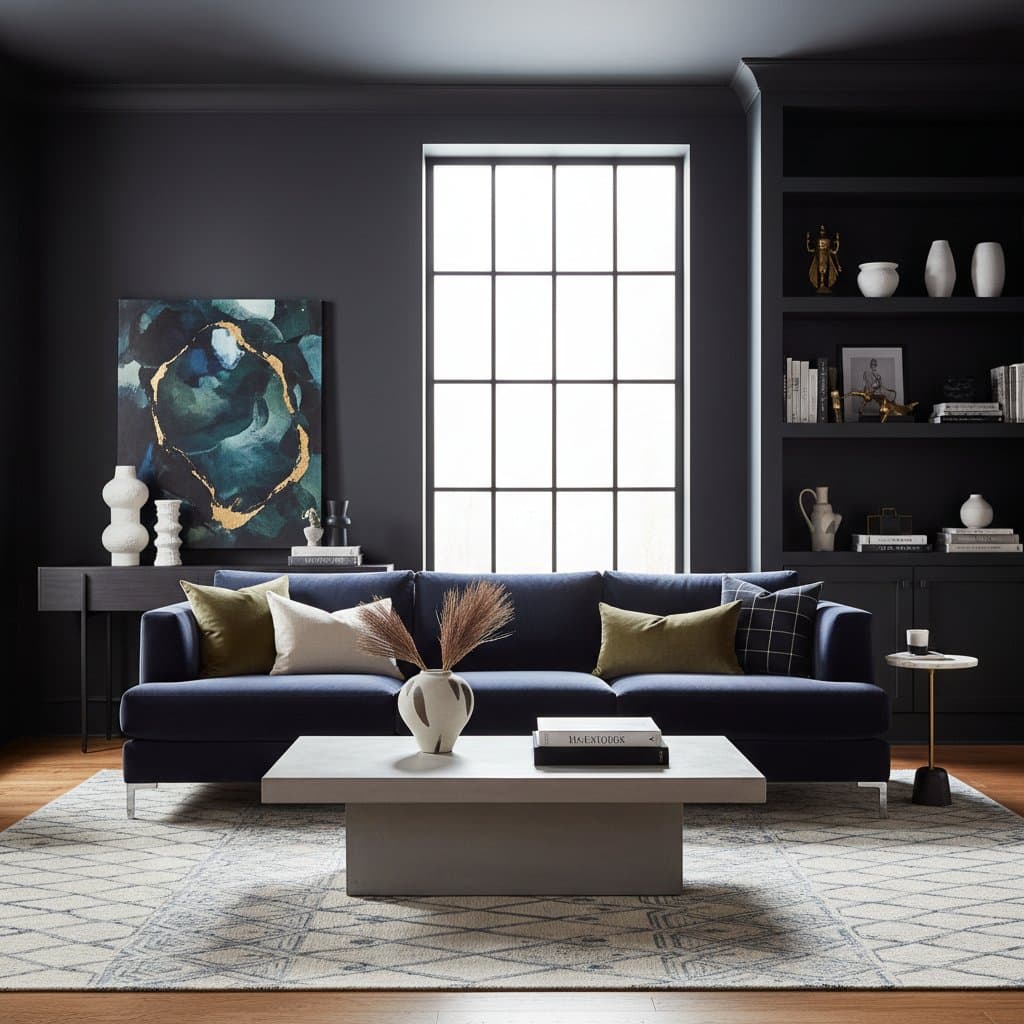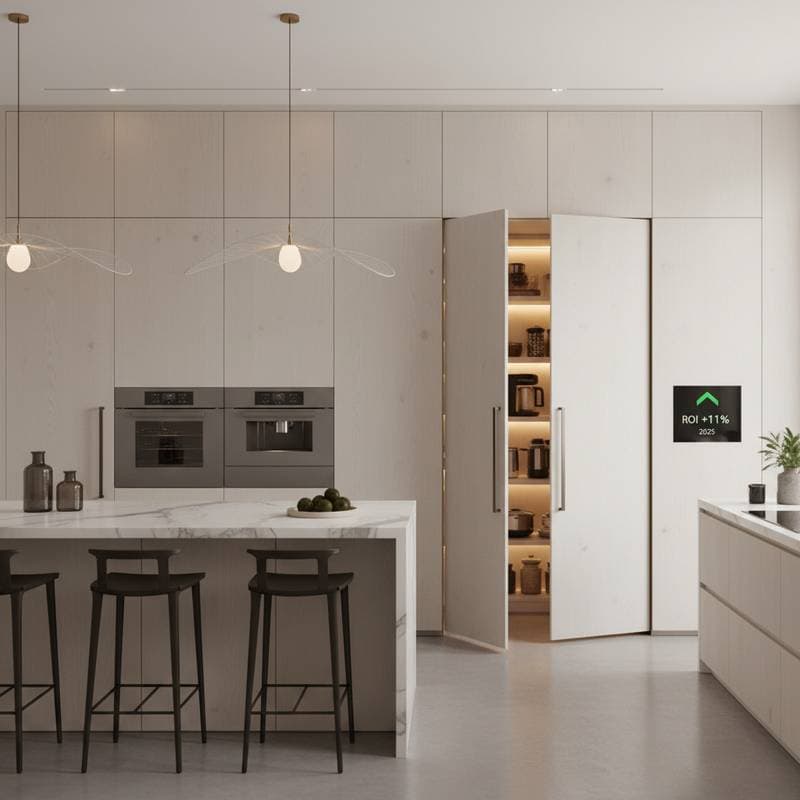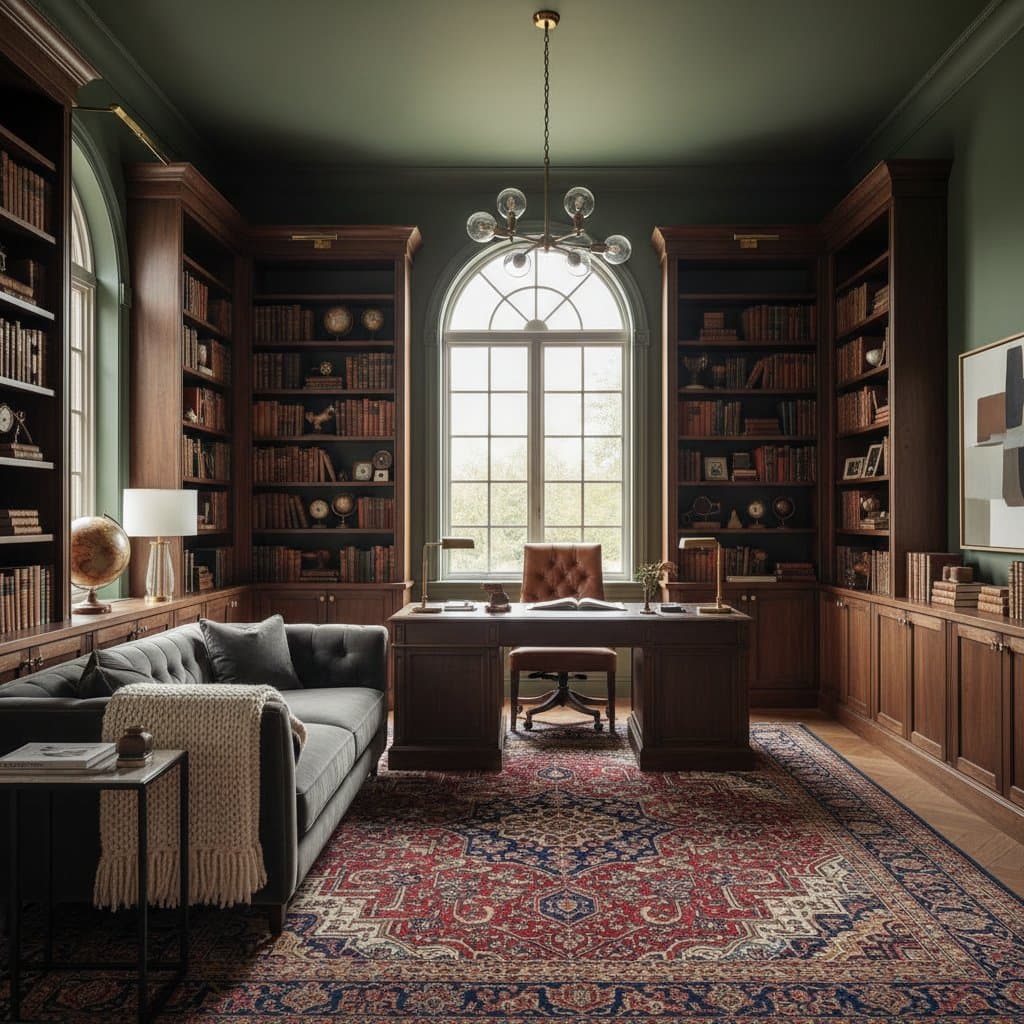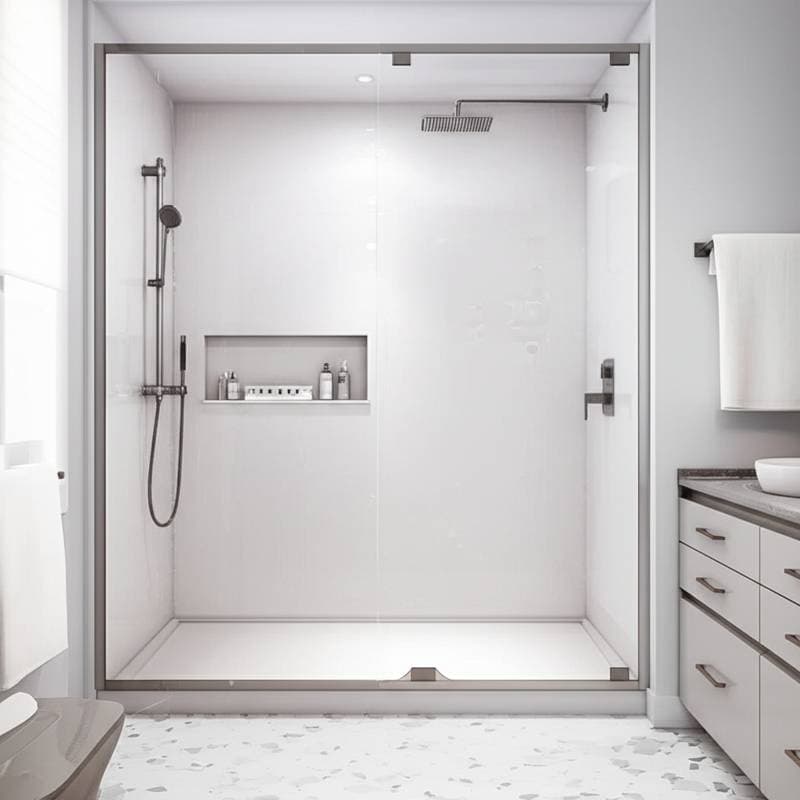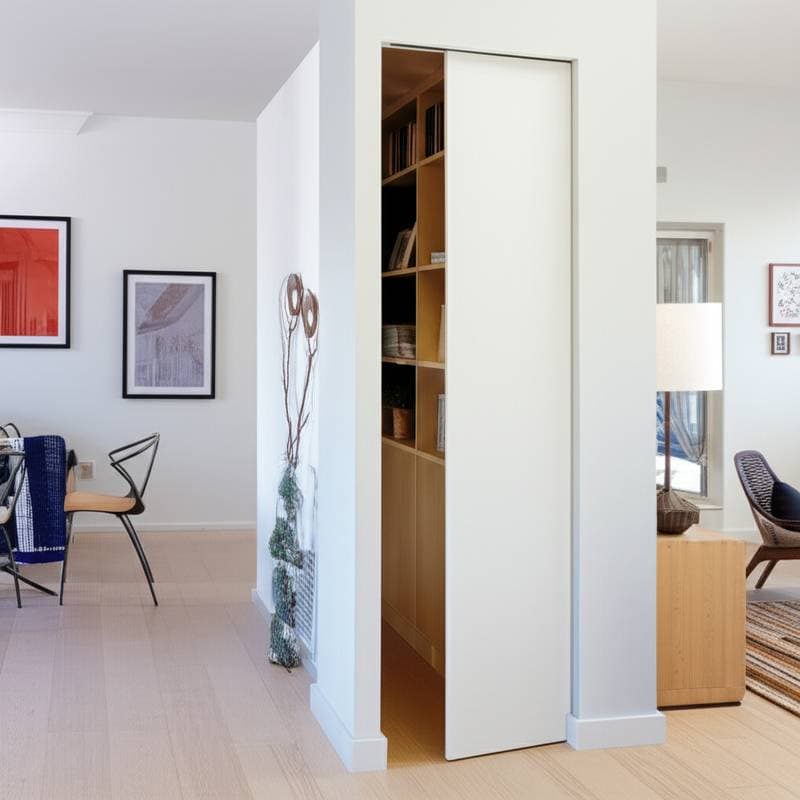Dark Walls Accelerate Home Sales by 15 Percent: The Power of Moody Interiors
Key Insight: Properties featuring dark, moody wall colors sell approximately 15 percent faster, often yielding returns of two to three times the investment in paint.
The Appeal of Dark Walls in Accelerating Sales
Prospective buyers gravitate toward environments that evoke emotion and sophistication. Dark walls convey assurance, intentional design, and a polished aesthetic that captures attention in photographs. Data from real estate analyses indicate that tones such as charcoal, deep green, navy, or espresso distinguish listings in competitive markets.
Neutral, lighter walls may appear reliable yet unremarkable. In contrast, a thoughtfully selected dark shade introduces depth and dimension, rendering spaces more purposeful and refined. Balance remains essential to prevent any sense of heaviness; when combined with ambient lighting, organic textures, and pale trim, dark paint enhances the presentation of furniture and artwork far beyond standard neutrals.
For those preparing a property for sale, applying darker hues to one or two primary rooms can revitalize listing images and elevate the perceived luxury during viewings, all without undertaking extensive renovations.
Painting Approaches and Design Strategies
1. Simple Accent Update
- Apply dark paint to a single accent wall in a living or dining area.
- Select shades like charcoal, slate, or midnight blue.
- Estimated cost: $150 to $350 for a do-it-yourself project.
- Primary advantage: Rapid enhancement that improves the impact of listing photographs.
2. Comprehensive Room Transformation
- Cover entire rooms with luxurious matte finishes.
- Incorporate repainting of ceiling trim to create visual contrast.
- Estimated cost: $800 to $1,800, including professional labor.
- Primary advantage: Unified, upscale appearance that appeals to buyers desiring immediate occupancy.
3. Luxury Enhancement
- Combine dark walls with light ceilings, enhanced lighting fixtures, and decorative molding.
- Estimated cost: $2,500 to $4,000 for a typical living room.
- Primary advantage: Achieves a bespoke ambiance akin to high-end custom designs in premium listings.
Project Timeline and Efficiency Tips
Allocate two to four days per room, encompassing preparation through complete curing. Darker paints require extended drying intervals between coats, particularly in humid environments.
Seasonal Considerations:
- Schedule painting during temperate conditions to promote uniform drying.
- Steer clear of high-humidity periods or severe cold.
- Anticipate potential delays in sourcing specific deep-base paints; verify availability in advance.
Strategies for Cost Reduction:
- Employ tinted primer to minimize the layers of topcoat paint required.
- Purchase five-gallon containers for uniform color matching and volume pricing benefits.
- Inquire at paint retailers about discounted "mistint" gallons in dark varieties, which may offer savings of up to 50 percent.
- Reserve an additional 10 to 15 percent of the budget for incidental touch-ups and trim detailing.
When preparing for an imminent sale, prioritize colors that perform consistently in photographs under varied lighting. Deep greens, charcoals, and navies maintain their appeal across digital platforms and listing visuals.
The Role of Dark Walls in Real Estate Dynamics
Buyers frequently browse listings at a rapid pace. Images of light-colored rooms often merge into indistinction. Darker walls command immediate notice, particularly when offset by pale furnishings and natural elements.
Real estate professionals observe that moody interiors project reliability and superior workmanship. The substantial presence of darker tones fosters an aura of inherent quality. Such impressions expedite buyer decisions and support elevated bidding.
Psychological Influences:
- Rich colors instill a sense of security and stability.
- They accentuate structural features, such as crown molding.
- They complement vibrant artwork or metallic accents without excessive reflection.
Recommendations by Room Type:
- Living Room: Charcoal or navy establishes a contemporary foundation.
- Bedroom: Deep olive or cocoa fosters tranquility.
- Dining Room: Aubergine or espresso creates an inviting, elegant atmosphere.
- Bathroom: Charcoal gray paired with light tiles delivers spa-like differentiation.
Refrain from coating all surfaces in identical dark shades. Incorporating lighter ceilings or trim preserves an open, airy feel.
Emerging Trends Shaping 2025 Interiors
Moody palettes gain prominence in property staging and contemporary constructions. Preferences shift from stark white expanses to layered, individualized schemes.
Leading Dark Shades:
- Charcoal Gray: Remains the most versatile option for broad market appeal.
- Deep Green: Harmonizes indoor serenity with exterior landscapes.
- Navy Blue: Adapts seamlessly to classic and contemporary architectures.
- Warm Black: Offers elegance without austerity.
- Chocolate Brown: Infuses warmth into streamlined designs.
Evolving Finish Preferences:
Matte and eggshell varieties prevail, as they diffuse light and conceal imperfections. Glossy applications appear selectively on trim or cabinetry for subtle sheen.
Insights from Buyer Surveys:
Staging research reveals that darker feature areas excel in online visuals. Balancing darkness with light furniture and foliage enhances spatial depth and signals readiness for new occupants.
Assessing Repaints: Repair or Renewal
For dark walls exceeding ten years in age, a fresh coat restores vibrancy and addresses accumulated wear. Evaluate repainting needs upon observing:
- Visible fading or powdery residue.
- Discoloration from water exposure or blistering.
- Flaking adjacent to baseboards or window frames.
Occasional light sanding and spot repairs may suffice, yet if wear affects more than 20 percent of a surface, a complete repaint delivers superior durability.
Long-Term Advantages:
Contemporary low-VOC formulations enhance air quality and withstand moisture, thereby reducing ongoing upkeep expenses.
Pitfalls to Sidestep in Dark Wall Projects
- Neglecting Primer Application: Results in patchy adhesion. Utilize tinted primer specifically for intense colors.
- Inadequate Lighting Evaluation: Apply a sample patch and observe it across daily light variations prior to full commitment.
- Excessive Darkness: Uniform dark coverage on all walls diminishes perceived volume. Introduce contrasting elements.
- Premature Second Coat: Allow complete drying of the initial layer to prevent streaks and inconsistencies.
- Overlooking Trim Preparation: Pristine white or neutral trim finalizes the composition.
Failure to address these issues incurs additional expenses in materials, corrections, or diminished buyer interest.
Implementing Moody Walls Effectively
Consider initiating with a modest application, such as a single wall behind a sofa or headboard. Monitor the interplay of light throughout the day to gauge equilibrium. Upon confirming harmony, proceed to broader implementation for enhanced impact.

